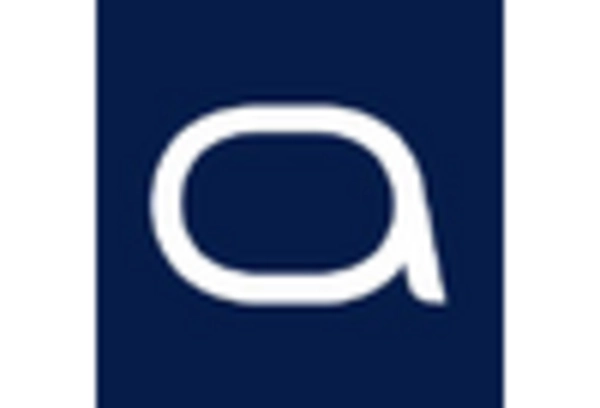Increasing Healthcare Expenditure
The rise in healthcare expenditure across various regions is a crucial driver for the Liver Cirrhosis Treatment Market. As countries allocate more resources to healthcare, there is a corresponding increase in funding for liver disease research and treatment. This trend is particularly evident in developed nations, where healthcare budgets are expanding to accommodate advanced treatment options and technologies. For example, the healthcare expenditure in the United States is projected to exceed USD 4 trillion by 2025, with a significant portion directed towards chronic disease management, including liver cirrhosis. This financial commitment is likely to enhance access to innovative therapies and improve patient outcomes, thereby stimulating market growth. Additionally, increased public awareness and advocacy for liver health may further drive healthcare investments in this area.
Rising Prevalence of Liver Diseases
The increasing incidence of liver diseases, particularly hepatitis and alcoholic liver disease, is a primary driver of the Liver Cirrhosis Treatment Market. According to recent data, liver cirrhosis affects millions worldwide, with estimates suggesting that approximately 1.5 million deaths occur annually due to liver-related conditions. This alarming trend necessitates the development and availability of effective treatment options, thereby propelling market growth. As healthcare systems strive to address this growing burden, investments in research and development of innovative therapies are likely to increase. Furthermore, the rising awareness of liver health and the importance of early diagnosis may lead to more patients seeking treatment, further expanding the market for liver cirrhosis therapies.
Growing Awareness and Education Initiatives
The growing awareness and education initiatives surrounding liver health are pivotal in shaping the Liver Cirrhosis Treatment Market. Campaigns aimed at educating the public about the risks associated with liver diseases, including lifestyle factors and the importance of regular screenings, are gaining traction. Organizations and healthcare providers are increasingly focusing on outreach programs to inform individuals about liver cirrhosis and its treatment options. This heightened awareness is likely to lead to earlier diagnosis and treatment, which can significantly improve patient outcomes. Furthermore, as more individuals become informed about liver health, the demand for effective treatment solutions is expected to rise, thereby propelling the market forward. The emphasis on preventive care and education may also encourage healthcare systems to invest more in liver disease management.
Regulatory Support for Innovative Therapies
Regulatory support for innovative therapies is emerging as a vital driver in the Liver Cirrhosis Treatment Market. Regulatory agencies are increasingly recognizing the need for expedited approval processes for new treatments, particularly those addressing unmet medical needs in liver disease management. Initiatives such as breakthrough therapy designations and fast-track approvals are facilitating the entry of novel therapies into the market. This supportive regulatory environment is likely to encourage pharmaceutical companies to invest in research and development of new treatment options for liver cirrhosis. As a result, the market may witness a surge in the availability of effective therapies, which could significantly enhance patient care. Moreover, the collaboration between regulatory bodies and industry stakeholders may foster innovation, ultimately benefiting patients suffering from liver cirrhosis.
Technological Advancements in Treatment Modalities
Technological innovations in treatment modalities are significantly influencing the Liver Cirrhosis Treatment Market. The emergence of novel pharmacological agents, such as direct-acting antivirals and antifibrotic drugs, has transformed the therapeutic landscape for liver cirrhosis. These advancements not only enhance treatment efficacy but also improve patient compliance and outcomes. For instance, the introduction of minimally invasive surgical techniques and advanced imaging technologies has facilitated better management of complications associated with cirrhosis. Market data indicates that The Liver Cirrhosis Treatment is projected to reach USD 20 billion by 2026, driven by these technological advancements. As research continues to evolve, the potential for new treatment options remains high, suggesting a robust future for the liver cirrhosis treatment sector.

















Leave a Comment